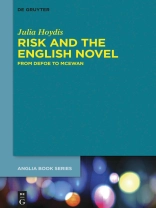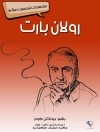Taking the cue from the currency of risk in popular and interdisciplinary academic discourse, this book explores the development of the English novel in relation to the emergence and institutionalization of risk, from its origins in probability theory in the late seventeenth century to the global ‘risk society’ in the twenty-first century. Focussing on 29 novels from Defoe to Mc Ewan, this book argues for the contemporaneity of the rise of risk and the novel and suggests that there is much to gain from reading the risk society from a diachronic, literary-cultural perspective. Tracing changes and continuities, the fictional case studies reveal the human preoccupation with safety and control of the future. They show the struggle with uncertainties and the construction of individual or collective ‘logics’ of risk, which oscillate between rational calculation and emotion, helplessness and denial, and an enabling or destructive sense of adventure and danger. Advancing the study of risk in fiction beyond the confinement to dystopian disaster narratives, this book shows how topical notions, such as chance and probability, uncertainty and responsibility, fears of decline and transgression, all cluster around risk.
เกี่ยวกับผู้แต่ง
Julia Hoydis, University of Cologne, Cologne, Germany.












